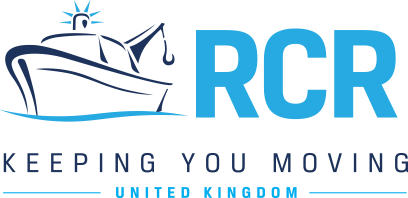Breakdown Guide
Canal Boat Breakdown Guide
River Canal Rescue, lists the five most common canal boat breakdowns and how to avoid them.This Guide also offers general preventative maintenance and tool box contents tips, discusses how to solve problems before calling out a third-party and gives a word of warning about bio-diesel.
If you would like information on anything mentioned below or would like the advice of an RCR engineer please do not hesitate to contact us on 01785 785680.
Common misunderstandings around what battery to use; its electrical capacity, charging levels and lack of attention to electrical connections contribute to batteries and electrical malfunctions taking the top spot.
Batteries – If you link a leisure rather than a cranking battery to your starter system you could be left without power when you need it most.
Leisure batteries and cranking batteries are designed for different requirements. The cranking battery is the same as fitted to most vehicles and designed to deliver a high output quickly, it discharges and charges back to full capacity quickly. A leisure battery is designed to deliver lower output continuously and therefore as long as its charged regularly will maintain capacity. As a general rule, each battery in your battery bank will require two to three hours charging to get back to full performance once fully discharged, assuming that it is in good condition.
If the wrong battery is used, the sudden surge of power needed to start the engine can quickly drain capacity on a leisure battery and whilst regular charging helps to regain these levels, using this type of battery will eventually lead to battery failure.
Its worth mentioning that many leisure batteries sold in the marine market are modified starter batteries and their performance, whilst suitable for owners who use the boat on a sporadic basis, can prove unreliable for more frequent users. For live aboard and frequent users its worthwhile investing in true leisure batteries such as those provided by Banner.
Most people do not realise that each battery cell can affect the whole battery bank, and one of the best ways to prevent battery deterioration is to regularly check and top up the water levels in the cells (using de-ionised water). If one cells water level drops to below 50%, it will affect the battery capacity and bring the battery bank capacity down to the same level, irrespective of how good the other batteries are. This is one of the best reasons never to mix and match batteries. Always replace the whole bank of old ones with new ones.
Similarly, battery terminals should not be forgotten – if they re tight and greased they’ll deliver a good connection. It only needs one loose terminal to cause engine failure and usually the main earthing cable (connected to the engine bed) is the culprit.
Electricals On a similar vein, wires coming away or corroding is a common fault, so again, visually check and look for loose connections or disconnected wires before you journey and use a water resistant spray or petroleum jelly to stop damp getting into electrical components like isolators and block connectors.
Contaminated fuel due to Diesel Bug and water contamination accounts for most of the fuel-related breakdowns, securing fuel issues second place. The bug is an enzyme that lives off water in diesel. In its mildest form it appears as black dust or soot, at its worst, its a black slime or jelly. Once in the system it clogs the engines fuel arteries and stops the engine working.
Historically, the whole system would need to be cleaned to tackle the bug, but River Canal Rescue uses a special fluid Marine 16 that prevents the bacteria from growing and kills anything that may be forming in the tank. One 500ml bottle treats 1000 litres (enough for multiple treatments) of fuel and is suitable for mild cases or as a preventative measure. More severe cases (or when the fuel system is blocked) require a Diesel Bug shock treatment.
Blocked filters and fuel contamination due to dirt and debris in the tank making its way through the fuel system also cause a large number of breakdowns a situation that can be easily rectified through regular checking and servicing. A number of marinas now offer fuel polishing services which will clean fuel without having to treat or dispose of the contaminated fuel.
In third place, breaking cables takes a bow. This is primarily due to their exposure to the elements as most of the cable terminus is set outside. Cables only have a certain life-span which means if they’re not used regularly, they’ll rust. To prevent this, you can grease the ends of the cable if leaving the boat for long periods of time, and always check the operation before you set off; if theirs any roughness or stiffness then it might be time to call into a marina to pick up a new one. When fitting, make sure that any bends in the cable are as minimal as possible as these will be the areas which suffer high stress and are likely to fail in the future.
Fourth place goes to a failure in the cooling systems which lead to the engine over-heating. The most common cause is due to an air-lock in the system which is simple to identify and resolve. To identify if this is the issue, feel the top and bottom of the swim tank, if everything is working fine there should be a difference in temperature, if not then both top and bottom will be hot or cold. To remedy this, locate and unscrew the bolt that sits on top of the swim tank and this will release the air locked in the system. However overheating can be caused by many issues from a coolant hose rupturing, (look for leaks) a water pump failing or a fan belt shredding (which drives the water pump) or the worst case, a head gasket failing.
There are a number of factors that contribute to alternator failure, from poor battery conditions resulting in the alternator working harder to charge the batteries, to battery management systems that over work the alternator to keep batteries continually charged up. Ultimately, one of the biggest issues is that alternators operate in a damp, hot environment, which is not healthy for any electrical product.
Like starters, theyre often left for long periods during the year and then used continuously for short periods. During this down period, rust can develop and affect operation. Theres no way to prevent this occurring other than to correctly winterise your vessel and regularly visit the boat and run the engine. This years call-out increase could be down to the amount of damp and rain, especially if water has ended up in the bilges. If your bilges are full of oil and water, this will be thrown over the alternators when the engine is running and as they are electrical components, the oil and water will bring about their early failure.
Preventative Maintenance
If you dont understand the workings of your engine or fail to service and maintain your boat, then its likely, at some stage, youll end up stranded. Lack of engine knowledge, gearbox /drive plate failures and faulty fan-belts, starters, propellers and couplings appear to be responsible for their fair-share of call-outs. In the majority of cases the emergency could have been avoided with a little know-how, by giving the boat a once-over or simply carrying spares.
River Canal Rescue runs monthly Engine Maintenance courses providing hands on experience in dealing with common issues and how to service your engine. Check their website for dates.
Know your engines common issues
Most owners believe the only way to turn off a boats engine when the switch fails (invariably causing a panic) is to turn off the fuel. However, most vessels have a manual stop button or lever located on the right hand side of the engine, half-way down. Using this instead of the fuel shut off will allow you to restart and continue on your journey without having to bleed your fuel system.
With Beta and Vetus engines a common issue is that the engine will not turn off or that the engine is completely dead. To resolve this, locate the wiring loom running across the top of the engine and identify a bulge. Peel back the rubber covering and you will find a block connector just pull the connection block apart and then put it back together. This should rectify the situation. Its easy when you know what to look for, so spend time scrutinising your engine before a failure occurs.
In contrast, if the engine is dead, it could be the isolation switches. If they’ve been left idle for a while, it could be due to a corrosive build-up, simply switch one way and then the other, or spray with WD40 before you set off.
Bilges as mentioned earlier, if your bilges are full of oil and water, this will end up being thrown over the engine and if it gets into the engine, the consequences could be disastrous (its also not a nice place for engineers to work). As well as starters and alternators, it also tends to affect drive plates if the oil/water mixture gets into the bell housing.
Gearbox/Drive Plates If you hit an underwater object, the drive plate is usually the first victim of this underwater collision. However, if you’ve damaged the drive plate, its unlikely you’ve damaged the gear box. General wear and tear appears to be another cause and because canal boats don’t have a clutch arrangement, gear boxes tend to receive a fair bit of abuse, so go easy and regularly service them.
Fan belts Always carry a spare, and before setting off develop a routine which includes checking the condition of these. Simply twist the belt and if there are cracks or the edges are starting to look ragged its time for a new belt. If you hear squealing from an old belt its usually an indication a replacement is needed. If its from a new belt, an adjustment is required. This is simple to do and worthwhile knowing how to.
Couplings – if the bolts connecting the propeller shaft to the engine are loose, any movement will either sheer them off, resulting in loss of propulsion, or make the coupling bolt holes oblong, resulting in delayed drive. Eventually the coupling will need to be replaced, and you may even have to change your prop shaft if the coupling has damaged it. A simple check before each journey will stop this happening.
Before a journey – its vital you develop regular maintenance routines and complete these before your journey, particularly if the boats been sitting idle for a long period.
Check the oil (especially important if you’re a new owner as you need to identify oil usage), and keep the engine clean (it’ll be easier to identify any new problems developing).
Look for leaks, if fuels seeping out, air will be getting in which will cause problems like erratic running and high engine vibration.
Check the bilge pumps are working and that you have enough to do the job effectively (RCR recommend installing one in the bilges for the living area it can prove essential if you get a hull leak or a pipe for your domestic system fails)). Also is there any water in the bilge? Find out why.
Check the battery and top-up with de-ionised water.
Check if the fan belt is loose, worn or even still there?
Look for any loose bolts/pipes (particularly the engine mounts and propeller shaft).
Scrutinise cables and control equipment for signs of wearing/fraying and tighten linkages etc replace or grease where necessary.
Owners who live aboard their craft appear to have far fewer call-outs because of the routines they already have in place.
Tool Box Essentials
Dont confine your tool box essentials to the garage a canal boat is equally as likely to require the same level of care and attention you give your home and vehicle.
The following are useful to have on board;
- A multi-meter (battery tester)
- PTFE tape (for dealing with unexpected domestic leaks)
- Adjustable spanners
- A flat head and multi-faceted Phillips screwdriver
- Pliers
- A hammer
- Spare lengths of electrical wire/ insulation tape
- A socket set
And dont forget the spares, such as; morse cables for steering, throttle and gear selection, fan belt, impeller, spark plugs, fuel filter, bulbs, bolts and fuses, plus a supply of oil and and stop leak or putty for those unexpected hull breaches.
Before you make that emergency call
Below are some common scenarios which may help you solving the problem before making that call;
If you are losing propulsion and the propeller is slow-moving, put the engine in reverse. The prop may be covered in weed or leaves and this can help release it.
If the engine cuts out when in gear, check the propeller for obstruction.
If the engine cuts out when revved, check the air filter – it may be blocked with dust (can be removed and run without it in an emergency). Alternatively check for blocked fuel filters (Vetus has a small fuel pump filter that is usually overlooked).
Is the engine overheating? It could be an air lock in the cooling system. Resolve it by unscrewing the bolt sitting on top of the water tank – this will release the air.
If the boat wont go into gear, check the cable is moving the selector arm on the gearbox, if it is then the cable is fine. Check the oil in the gearbox.
Engine wont turn off? Know where the manual stop button or lever is situated, usually on the right hand side of the engine
A word of warning – Bio diesel
Whilst River Canal Rescue is yet to collect conclusive proof, the firm has gone from replacing two injector pumps a year to 48 in 2014. It is feared bio-diesel which is known to corrode rubber seals and cause internal rusting is resulting in the increase in injector pumps failing. RCR is monitoring the situation and will report back on trends, however in the meantime, the use of a fuel treatment additive like Marine 16, to help lubricate the system is recommended.


